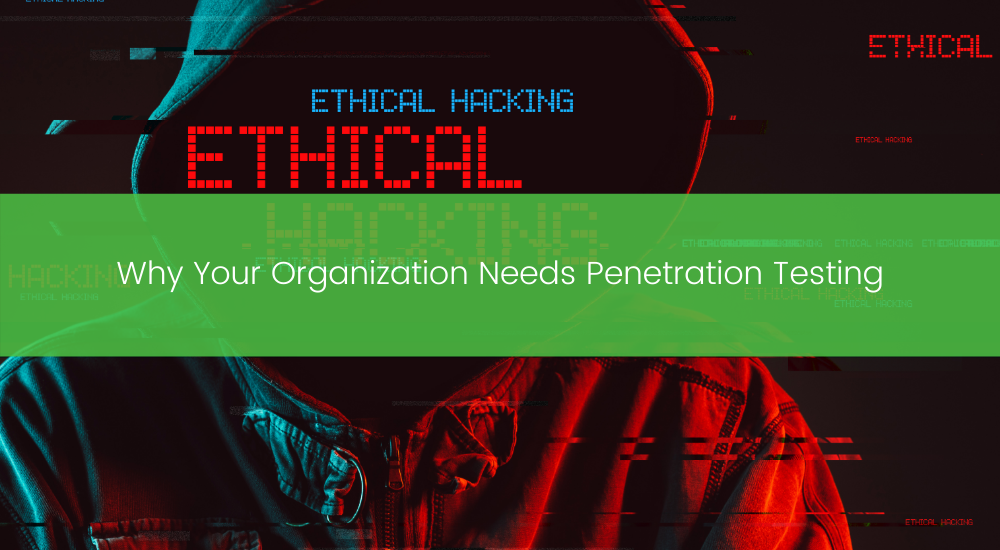
Why Penetration and Vulnerability Testing are Equally Essential
There are a handful of important cybersecurity practices you need to implement in your business, two of which are vulnerability and penetration testing. Regardless of what else you do, without these, your risk of being compromised is high.
1. Penetration and vulnerability testing are not the same
A common misconception, especially among new business owners, is that penetration and vulnerability testing are basically the same, and where they do differ, it’s not significant. This false belief can cost your business a fortune. The truth is that both penetration testing and vulnerability testing work together to provide a high level of security.
Many businesses at least get the ball rolling with a cybersecurity assessment, but you need to implement solutions like access controls and security measures after you get your results. Simply knowing about a vulnerability won’t fix the issue.
To understand why you need both types of testing, it’s crucial to understand that vulnerability testing is passive and only seeks to identify clearly exploitable vulnerabilities. Though important, it doesn’t address the sophistication involved in many attacks that are intelligently engineered, often using multiple steps.
What does vulnerability testing accomplish?
When it comes to threats, you can’t predict where they might strike unless you test your own network and systems to find out where they’re weak and open to attack. Vulnerability testing uses automation to identify areas of weakness in your network and all connected devices, including software, hardware, and existing security systems (like firewalls).
What does penetration testing accomplish?
Penetration testing involves launching simulated attacks engineered to mimic what a hacker might attempt to gain access to your network or systems, often through social engineering and other attempts to gain unauthorized access. This is an active approach that can be automated, manual, or both. Pen testing uses more complex strategies than vulnerability testing. Since it’s more involved, penetration testing costs a bit more, but you really can’t afford to choose one over the other.
2. The tightest security systems can’t prevent all incidents
Firewalls and other security systems can only thwart some types of unauthorized traffic. For example, if a hacker obtains a valid username and password, they’ll be able to slip by undetected because your system will think they’re a valid user. Strict access controls that tie logins to registered devices and require multi-factor authentication (MFA) can prevent this problem. However, many organizations don’t realize the magnitude of this potential threat until they get an IT vulnerability assessment.
Another type of attack you need to be concerned about is phishing. An otherwise secure network can be destroyed by a successful phishing attack launched against one of your employees.
With a phishing scheme, hackers send out emails to employees and mask the “from’ email address to make it look like it’s coming from someone familiar, often inside the company. These emails ask them for personal information that can be used to breach the company’s network. Sometimes the victim is asked to click on a link to fix a problem with an account.
These malicious links take the victim to a web page that mimics the real site, but it’s all within the hacker’s control. When the target page loads, they’re asked to enter their login information and instead of logging them in, the information is emailed to the hacker.
3. Manual pen testing is advanced
When you get penetration testing, manual methods employed by advanced pen testers can discover deeply nested flaws inside of your organization that automated systems may fail to notice. Automated methods are the fastest and easiest way to discover vulnerabilities, but if you want a robust security assessment you need manual pen testing.
4. You might have logic flaws
Although hackers are a threat to your business, there’s another problem you might encounter that only a manual pen test can help you find. For example, say your shopping cart system uses an item’s quantity and price to display the total price for a customer’s purchase. If a user inputs a negative quality, the system might render the purchase value as free or worse, it might send a refund to the customer for the total they were supposed to pay.
If anyone finds out about this, they might exploit your business for as long as it takes you to notice.
You need both penetration and vulnerability testing
If you’re looking into your IT security options, don’t choose only vulnerability testing to save money; a frugal approach to cybersecurity puts your business at risk. Penetration testing does require an additional budget, but it’s worth the cost since it provides you with additional insight into securing your business that you can’t get from vulnerability testing alone.

